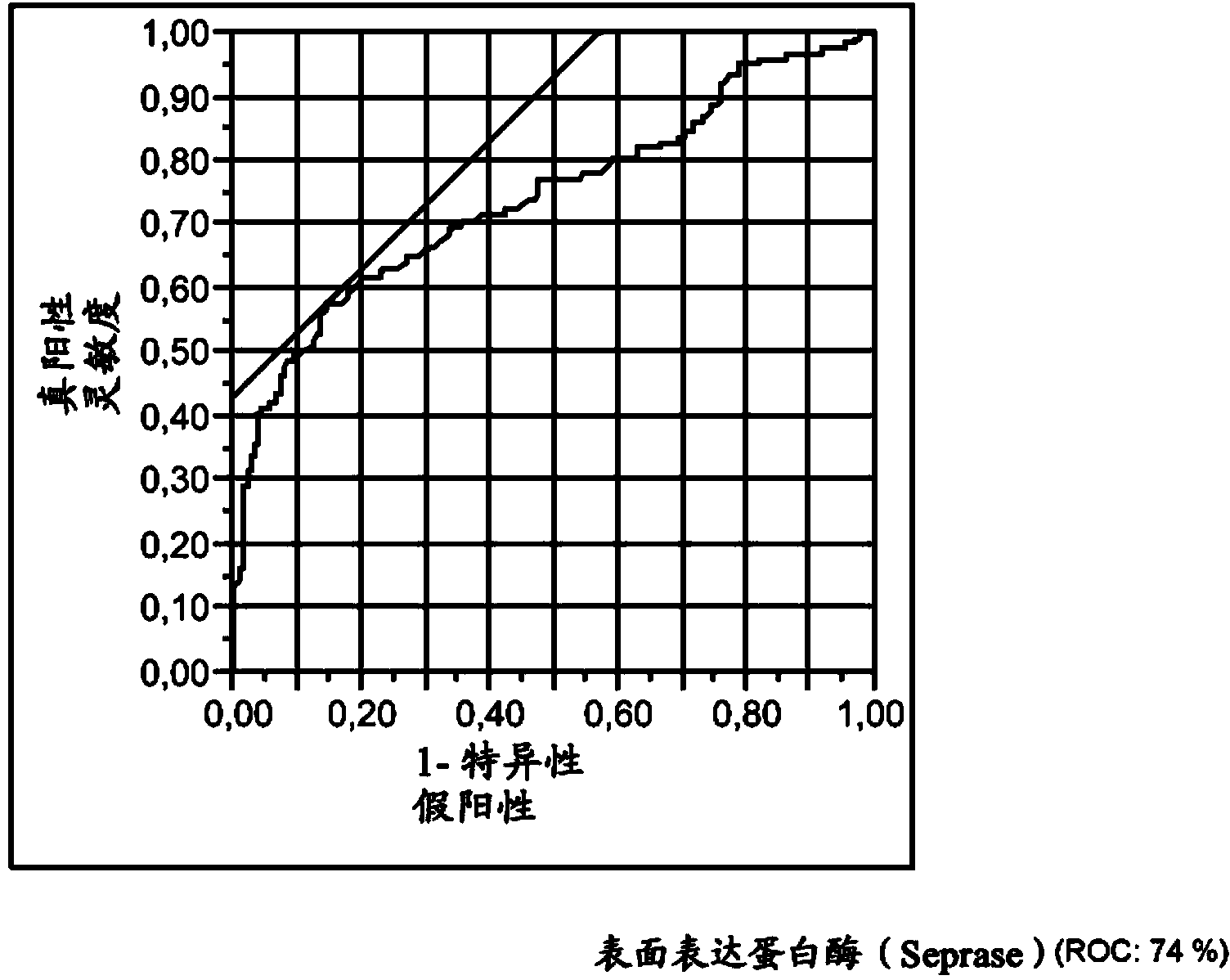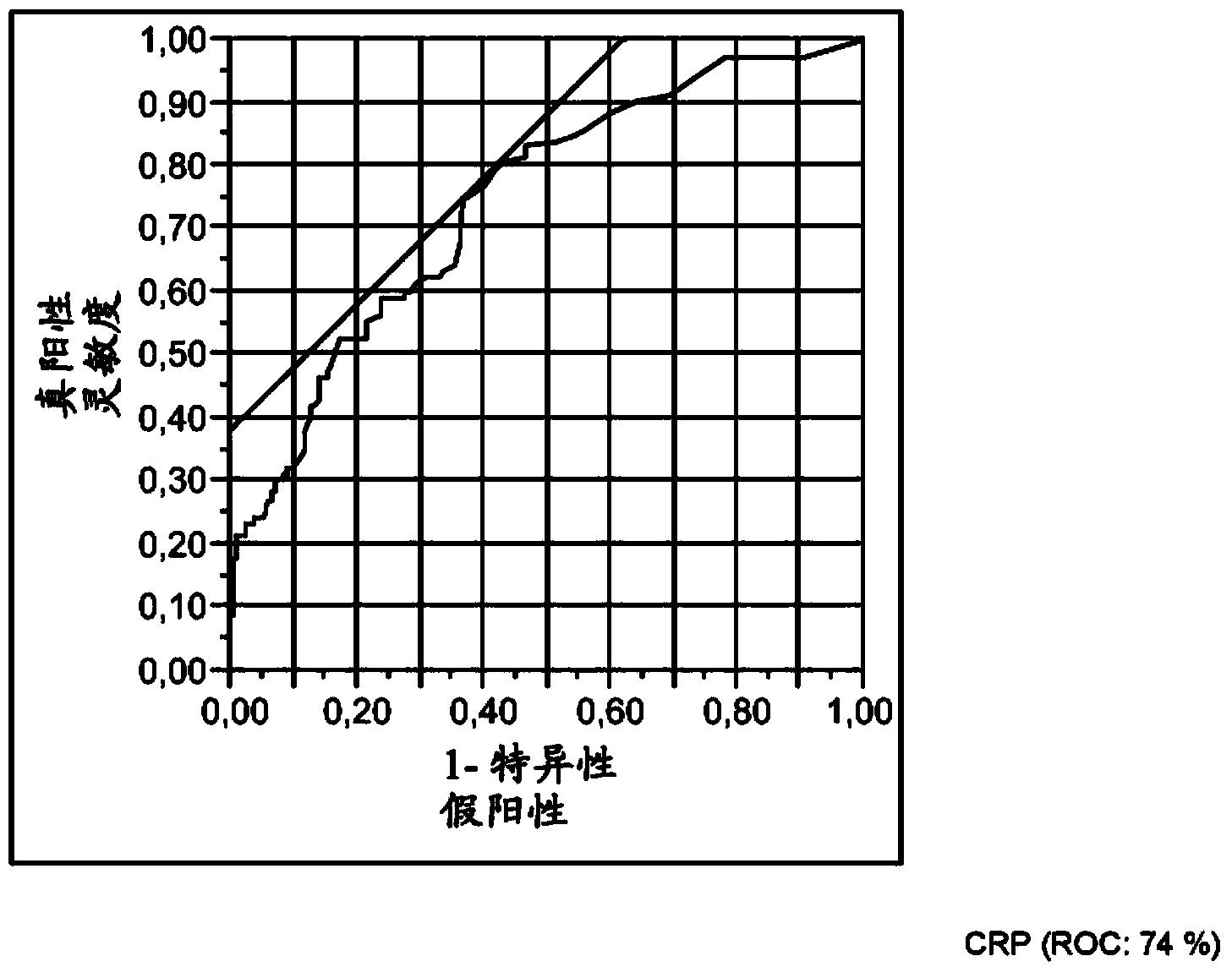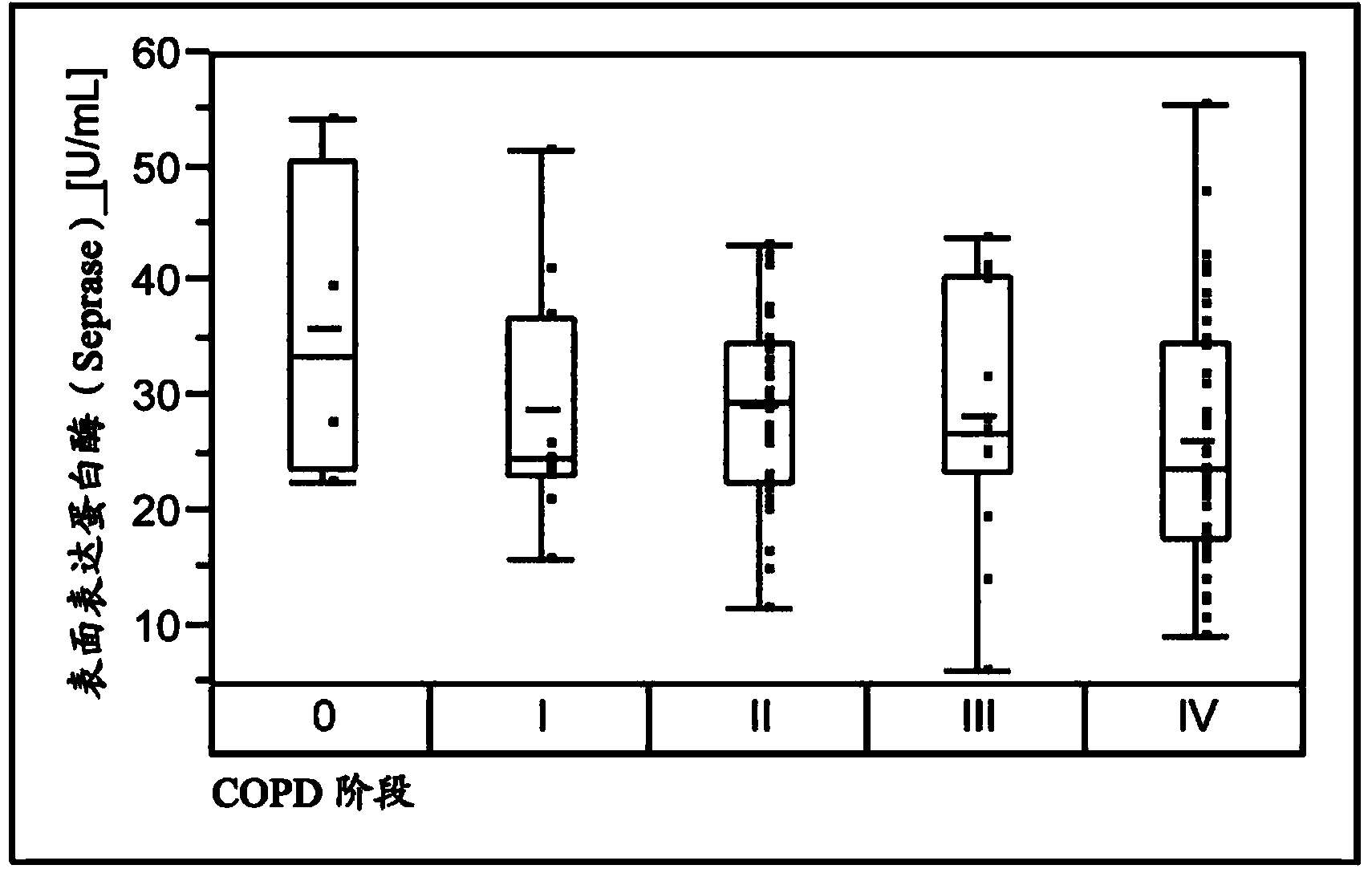Seprase as marker for chronic obstructive pulmonary disease (copd)
A chronic obstructive, surface-expressed technology that can be used in disease diagnosis, biological testing, biomaterial analysis, etc., and can solve the problems of time-consuming general and widespread use burden, expensive spirometry, etc.
- Summary
- Abstract
- Description
- Claims
- Application Information
AI Technical Summary
Problems solved by technology
Method used
Image
Examples
Embodiment 1
[0220] Example 1: COPD Study Population
[0221] Source of serum samples:
[0222] To identify COPD-specific proteins as potential diagnostic markers of COPD, serum samples were derived from well-characterized COPD patients (according to the ATS classification system in Table 1) in a national multicenter study. From each sample donor, spirometry was performed. Pulmonary function, other diagnostic tests, and cause, diagnosis, and comorbidities of transferal were documented in a dedicated case report form (CRF). COPD samples have been evaluated in comparison to control samples obtained from Control Groups 1-4, as shown in Table 2.
[0223] Serum sample preparation:
[0224] Serum samples were collected into serum tubes and allowed to clot for at least 60 minutes and up to 120 minutes at room temperature. After centrifugation (10 min, 2000 g), the supernatant was divided into 1 ml aliquots and frozen at -70°C. Samples were thawed, aliquoted into smaller volumes suitable for ...
Embodiment 21
[0225] Example 2.1: Antibodies against the marker protein Seprase
[0226] As Seprase-specific binding molecules, two different rat monoclonal anti-Seprase antibodies (clones D8 and D28) were used (Pineiro-Sanchez, M.L. et al., J. Biol. Chem. 12 (1997) 7595-7601).
[0227] Biotinylation of Monoclonal Rat IgG:
[0228] Monoclonal rat IgG (clone D28) in 10 mM NaH 2 PO 4 / NaOH pH7.5, 30mM NaCl to adjust to 10mg / ml. Add 50 μl biotin-N-hydroxysuccinimide (3.6 mg / ml in DMSO) per ml IgG solution. After 30 minutes at room temperature, the sample was placed in Superdex200 (10mM NaH 2 PO 4 / NaOH pH7.5, 30mM NaCl) on the chromatography. Fractions containing biotinylated IgG were pooled. Polyclonal antibodies have been biotinylated following the same protocol.
[0229] Digoxigenation of Monoclonal Rat IgG:
[0230] Monoclonal rat IgG (clone D8) in 10 mM NaH 2 PO 4 / NaOH, 30mM NaCl pH7.5 to adjust to 10mg / ml. Add 50 μl of Digoxigenin-3-O-methylcarbonyl-ε-aminocaproic acid-N-hyd...
Embodiment 22
[0231] Example 2.2: CRP
[0232] The marker protein CRP was measured using a homogenous assay (Hitachi) distributed by Roche Diagnostics (Mannheim, FRG).
PUM
| Property | Measurement | Unit |
|---|---|---|
| molecular weight | aaaaa | aaaaa |
| molecular weight | aaaaa | aaaaa |
| molecular weight | aaaaa | aaaaa |
Abstract
Description
Claims
Application Information
 Login to View More
Login to View More - R&D
- Intellectual Property
- Life Sciences
- Materials
- Tech Scout
- Unparalleled Data Quality
- Higher Quality Content
- 60% Fewer Hallucinations
Browse by: Latest US Patents, China's latest patents, Technical Efficacy Thesaurus, Application Domain, Technology Topic, Popular Technical Reports.
© 2025 PatSnap. All rights reserved.Legal|Privacy policy|Modern Slavery Act Transparency Statement|Sitemap|About US| Contact US: help@patsnap.com



